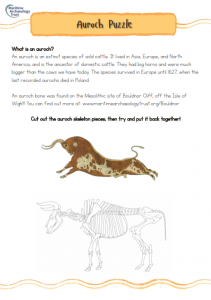This activity can be used to teach students about methods of archaeological and historic research, using artefacts and biofacts to interpret various types of archaeological contexts and to reconstruct past activities and landscapes. It can be used to introduce a discussion about the use of natural resources as raw materials to produce ancient artefacts and how this human-environment relationship influences the shaping and changing of the landscape.
Having to write about the two sites, they will have to base their description on what they have just learned. This will encourage them to think like a researcher/historian and base their claims on the evidence to support their theory.
Find out more about Archaeological Finds and Recording Methods:
- An educators’ guide, pages 8-9, 12-26-28
- Archaeological Finds
- Archaeology is Rubbish!
- Flint Identification
- Mystery Wreck
- The Hamble River Activity Book
Click the image below to download the resource!

Curriculum Links
KS2
| ENGLISH | Reading-word reading, Reading-comprehension, Writing-composition |
| GEOGRAPHY | World features |
| HISTORY | Methods |
KS3
| ENGLISH | Reading, Writing |
| GEOGRAPHY | Human geography |
| HISTORY | Methods |
KS4
| ENGLISH | Reading, Writing |
